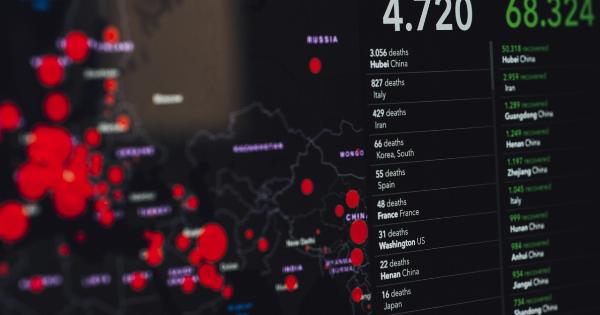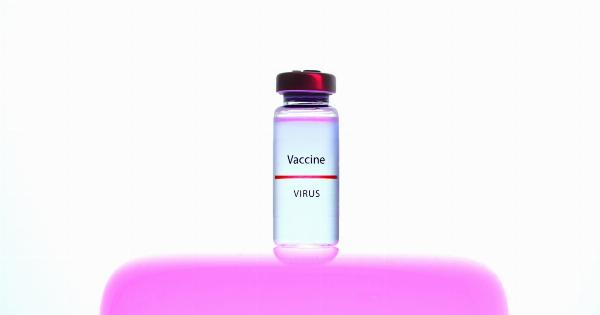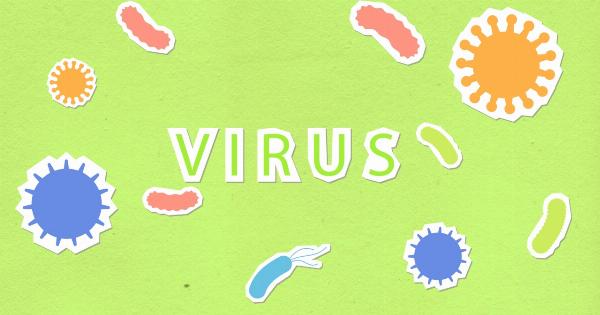In a shocking turn of events, a covert outbreak has put 1.2 million lives at risk. The situation is dire, and urgent action needs to be taken to contain the outbreak and protect the affected population.
In this article, we will delve into the details of the covert outbreak, its potential consequences, and the steps that must be taken to mitigate its impact.
Uncovering the Covert Outbreak
The covert outbreak, also known as a hidden epidemic, refers to the spread of a contagious disease or virus without the knowledge or detection of health authorities.
Unlike well-publicized outbreaks, such as the recent COVID-19 pandemic, covert outbreaks occur under the radar, often in isolated or marginalized communities with limited healthcare infrastructure.
The precise origins of this covert outbreak remain unknown, raising concerns about its potential for further spread and mutation. Initial reports suggest that the outbreak started in a remote village, far away from major urban centers.
Due to the lack of surveillance and monitoring systems in place, the virus had ample time to silently infiltrate neighboring regions before coming to the attention of health authorities.
The Vulnerable Population
The covert outbreak has put 1.2 million people at risk, primarily in underprivileged areas with inadequate healthcare resources.
These regions already face significant challenges in terms of healthcare access, making them particularly vulnerable to the impact of the outbreak.
Among the affected population, there are people from all age groups, including children, adults, and the elderly. The elderly, in particular, are at heightened risk due to their weakened immune systems and comorbidities.
Moreover, the lack of proper medical facilities exacerbates their vulnerability, leaving them more prone to severe complications and mortality.
The Devastating Consequences
If left unchecked, the covert outbreak could have devastating consequences for both the affected population and the larger society.
The primary concern is the rapid transmission of the virus, which could overwhelm healthcare systems and lead to a significant increase in mortality rates.
First and foremost, the health and wellbeing of the affected individuals are at stake. The virus, still not fully understood, may cause severe illnesses, chronic disabilities, and even fatalities.
The lack of proper medical attention and resources aggravates the situation, leaving people to suffer without adequate treatment.
Additionally, the covert outbreak could disrupt the social fabric of entire communities. Fear and panic may grip the affected areas, leading to stigmatization and discrimination against those infected or suspected of being infected.
This could result in social isolation and a breakdown of trust, further complicating efforts to control the outbreak effectively.
Taking Action: Containment and Mitigation
To address the covert outbreak and safeguard the lives at risk, a comprehensive and coordinated response is essential. Here are some crucial steps that need to be taken:.
1. Rapid Testing and Contact Tracing
The first priority should be to identify and diagnose individuals who have contracted the virus. Widespread testing, coupled with efficient contact tracing, can help identify infected individuals and isolate them to prevent further transmission.
This requires allocating sufficient resources and deploying trained healthcare personnel to conduct tests and trace contacts.
2. Strengthening Healthcare Infrastructure
Efforts must be made to bolster the healthcare infrastructure in the affected regions.
This includes ensuring an adequate supply of essential medical equipment, such as ventilators and personal protective equipment (PPE), as well as recruiting and training healthcare professionals to handle the increased patient load.
3. Public Awareness and Education
Public awareness campaigns should be launched to educate the population about the covert outbreak, its symptoms, and preventive measures.
This includes promoting good hygiene practices, such as handwashing and wearing masks, as well as dispelling misinformation and rumors that may circulate within communities.
4. Collaborating with International Organizations
International organizations, such as the World Health Organization (WHO) and non-governmental organizations (NGOs), play a crucial role in coordinating response efforts.
Collaboration with these entities can ensure the provision of essential resources, technical expertise, and financial aid to support the affected regions.
5. Prioritizing Vaccination Campaigns
Developing and distributing an effective vaccine against the virus should be a top priority. Vaccination campaigns must be accelerated to protect the vulnerable population and mitigate the spread of the outbreak.
Collaboration with pharmaceutical companies, research institutes, and regulatory bodies is key to expediting the development and approval of vaccines.
An Uphill Battle Ahead
The covert outbreak, with its potential to wreak havoc on 1.2 million lives, presents an uphill battle for healthcare systems and authorities.
Swift and decisive action is needed to contain the outbreak, protect the vulnerable population, and prevent a catastrophic outcome.
By implementing rigorous testing and contact tracing measures, strengthening healthcare infrastructure, raising public awareness, collaborating with international organizations, and prioritizing vaccination campaigns, it is possible to turn the tide and mitigate the impact of this covert crisis.































